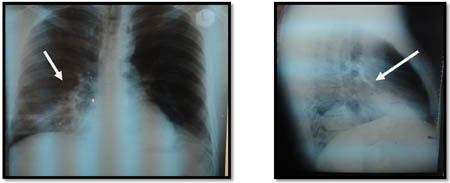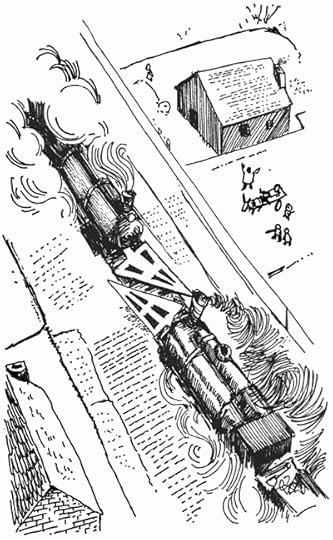Marc Abrahams's Blog, page 404
May 13, 2014
Non-smokers who might someday smoke might someday smoke
Another possibly great possible breakthrough in the ongoing effort to write academic reports related to addiction. The discovery in this report:
Among children who do not smoke cigarettes, the ones who
drink alcohol OR
smoke marijuana OR
have positive attitudes toward smoking cigarettes OR
who have close friends who smoke cigarettes
might themselves some day become cigarette smokers, or they might not. The other children might not become cigarette smokers, but they might.
The study is:
“We do not smoke but some of us are more susceptible than others: A multilevel analysis of a sample of Canadian youth in grades 9 to 12,” Susan C. Kaai, K. Stephen Brown, Scott T. Leatherdale, Stephen R. Manske, Donna Murnaghan, Addictive Behaviors, epub April 21, 2014. The authors, at the University of Waterloo and the University of Prince Edward Island, explain:
“Smoking susceptibility has been found to be a strong predictor of experimental smoking. This paper examined which student- and school-level factors differentiated susceptible never smokers from non-susceptible never smokers among a nationally representative sample of Canadian students in grade 9 to 12…. Students in this study were more likely to be susceptible never smokers if they reported low self-esteem, held positive attitudes towards smoking, used alcohol or marijuana, had close friends who smoked, and came from homes without a total ban on smoking.”
How did the researchers identify which of the children were “susceptible” to becoming smokers, and which were not? Here’s how:
“Only the ‘never smokers’ were eligible to have a smoking susceptibility rating. Susceptibility was measured by asking students: (a) ‘Do you think in the future you might try smoking cigarettes?’ (b) ‘If one of your best friends were to offer you a cigarette, would you smoke it?’ and (c) ‘At any time during the next year do you think you will smoke a cigarette?’ Students responded to these questions on a 4-point Likert Scale. Consistent with Pierce et al. (1996) students who answered ‘definitely not’ to all three questions were considered non-susceptible; the rest were considered susceptible.”
NOTE: At right, here, are some numbers displayed in the study. You might find them to be meaningful.

Viagra Induces Fractal Growth in Mushrooms in Switzerland
“Viagra Induces Fractal Growth in Mushrooms in Switzerland“, by Gabriele Losa [pictured here], appears in the special Cloning & Evolution issue of the Annals of Improbable Research. (The article is also online.) It begins:
This study investigates the effect of Sildenafil (a synthetic drug that is known to much of the public as “Viagra“) on the growth and shape of the mushroom Boletus edulis (a Basidiomycete of the Boletaceae family), diffused in the beechwood trees (Fagus) of Ticino, the region with Italian culture located in the Southern part of Switzerland.
Background: About Sildenafil, and these Mushrooms, and Fractal Analysis
The pharmacological compound Sildenafil has been shown to treat the male erectile dysfunction “impotentia erigendi ” by inhibiting a set of c-Phospodiesterase-5 enzymes, what in turn intensifies the blood afflux into the “corpora cavernosa”, filling them up to turgidity leading to penis erection. (Dunzendorfer 2004). Mushrooms of Boletaceae family including the Boletus edulis type, mostly display a phallus-like morphology formed by a stalk and a cap (pileus) whose extent and consistency may be influenced by various environmental agents, including growth factors and complex molecules such as polyphenols and other natural antioxidants.
Some analogies were noticed between Sildenafil and the chemical structure of natural polyphenols, flavonoids and many other cyclic compounds as rosmarinic acid abundant in macro-fungi, which exhibited an antioxidant free-radical scavenging activity (Guo et al. 2012). These morphological and physiological properties prompted us to investigate the role of Sildenafil on the proliferative capacity and on the morphological changes of Boletus type growing in the natural habitat of a Fagus forest.…

May 12, 2014
Your eminent guide to the cockroaches of Australia
What more pleasing guide could one have to the cockroaches of Australia than one of the scientists who was awarded the 2011 Ig Nobel prize for biology, for discovering that a certain kind of beetle mates with a certain kind of Australian beer bottle?
David Rentz, who shared that Ig Nobel Prize with Darryl Gwynne, has written a new book called A Guide to the Cockroaches of Australia, published by CSIRO.
BONUS: Listen to an interview — ‘Just how dirty are cockroaches?’ — with him, on ABC North QLD. The first question in the interview: “One fly, one cockroach, one rolled up newspaper. Which would you kill first?“
BONUS: More about this in the Canberra Times and in City News.

A look back at Dutch Ig Nobel night 2013
De Nederlandse Ig Nobel Night (Dutch Ig Nobel Night) is an official satellite event of the annual Ig Nobel Prize ceremony. Persons large and small, old and young, gather in a grand theater in Leiden to see live (1) performances by Ig Nobel Prize winners and outstandingly amusing Dutch scientists, and then to (2) view the actual Ig Nobel Prize Ceremony on a cinema screen.
The organizers of de Nederlandse Ig Nobel Night have put together a little look at last year’s event.

Profiling Professor Persinger – part 2
 Can one’s brain become entangled? Einstein called quantum entanglement ‘spooky’, but he was nevertheless obliged to grapple with the puzzles and possibilities of Verschränkung – which were first fully described by Erwin Schrödinger, circa 1935. Since then, a series of experimental studies have convincingly demonstrated entanglement behaviour at the quantum level – but few theorists have extrapolated the idea to a biological macro-entanglement scale which could suggest the possibility of the exchange of information between the human brain’s cerebrum and the geophysical, electromagnetic-gravitational environment. But Professor Michael A. Persinger of the psychology dept. at Laurentian University, Ontario, Canada, has done just that in a paper for the Journal of Consciousness Exploration & Research October 2010, Vol. 1, Issue 7, pp. 785-807. His paper not only examines the implications of ‘thought energy’ and the possible involvement of gravitational energy with consciousness, but also describes the brain’s emission of photons during thought processes. [recently covered by Improbable here] The professor also draws attention to Schumann resonances, explaining how :
Can one’s brain become entangled? Einstein called quantum entanglement ‘spooky’, but he was nevertheless obliged to grapple with the puzzles and possibilities of Verschränkung – which were first fully described by Erwin Schrödinger, circa 1935. Since then, a series of experimental studies have convincingly demonstrated entanglement behaviour at the quantum level – but few theorists have extrapolated the idea to a biological macro-entanglement scale which could suggest the possibility of the exchange of information between the human brain’s cerebrum and the geophysical, electromagnetic-gravitational environment. But Professor Michael A. Persinger of the psychology dept. at Laurentian University, Ontario, Canada, has done just that in a paper for the Journal of Consciousness Exploration & Research October 2010, Vol. 1, Issue 7, pp. 785-807. His paper not only examines the implications of ‘thought energy’ and the possible involvement of gravitational energy with consciousness, but also describes the brain’s emission of photons during thought processes. [recently covered by Improbable here] The professor also draws attention to Schumann resonances, explaining how :
“The physical intensities of the Schumann frequencies as well as their patterns are remarkably similar to those of the human brain.”
See: Persinger M. A., Lavallee C. F. (2010). Theoretical and experimental evidence of macroscopic entanglement between human brain activity and photon emissions: implications for quantum consciousness and future applications. J. Cons. Explor. Res. 1 785–807.
Other Prof. Persinger publications include :
Persinger, M.A. Rats’ preferences for an analgesic compared to water: an alternative to “killing the rat so it does not suffer”. Perceptual and Motor Skills, 2003, 96, 674-680.
Persinger, M.A. Limitations of human verbal behaviour in context of UFO-related stimuli. In R.F. Haines (Ed.), UFO Phenomena and the Behavioral Scientist. Metuchen, NJ: Scarecrow, 1979.
Coming soon: Profiling Professor Persinger – part 3

Further fiery adventures of adventurous 25 year old male students (chapter the next)
Yet another medical report concerning fiery exhuberance in young adults:
“Acute Unintentional Intoxication with Paraffin in a 25-Year old Patient — Clinical case report,” Andon Chibishev and Natasa Simonovska, Journal of Forensic and Legal Medicine, epub May 10, 2014. (Thanks to investigator Ivan Oransky for bringing this to our attention.) The authors, at University Clinic for Toxicology and Urgent Internal Medicine, Skopje, Republic of Mecedonia, write:
“We report about a rare case of an amateur fire-breather who tried to perform a fire-breathing show without any previous experience. Our patient is a very adventurous, healthy 25 year old male student…. Acute unintentional intoxications with liquid paraffin are very rare in our country.”
Here’s detail from the study, giving insight into the person of the young adult in question:

May 11, 2014
Preview of the Ig Nobel shows in Copenhagen
A gaggle of Ig Nobel Prize winners and I will be in the oft-magical city of Copenhagen, doing Ig Nobel shows as part of ESOF, in June. The Ig Nobel winners:
Dr. Elena Bodnar (inventor of the Chernobyl-inspired Emergency Bra)
Magnus Whalberg (co-discoverer: herring apparently communicate by farting)
Emily Baird and Marie Dacke (co-discoverers of the ability of dung beetles to navigate by using the Milky Way)
Kees Moeliker (discoverer of homosexual necrophilia in the mallard duck)
WHEN: June 22 (Sunday) and June 24 (Tuesday), 2014
WHERE: Science in the City, ESOF, Copenhagen, Denmark — in The Rethink District, Carlsberg Byen, Enghave Plads
The ScienceNordic web site wrote a preview of the shows. Here’s a snippet:
… A commission was set up to investigate and Wahlberg’s research group were given the task of solving the mystery of the submarine sounds. They travelled to Stockholm and listened to the ‘secret’ sounds – and were surprised by what they heard.
“We immediately ruled out that these were sounds from submarines,” he says. However, they still didn’t recognise the source so Wahlberg brought the recordings to his lab to find explanations. He eventually found it and it turned out to be a most unlikely source.
“We discovered that the sounds came from herring who farted,” he says.
“If only we’d described the fish farts sooner, we could’ve kept the Swedish defence budget a little lower and Sweden and Russia would have had a better relationship towards the end of the cold war. The whole affair caused a diplomatic crisis between the two countries,” says Wahlberg.…

The progress of a sigh
Since the awarding of the 2012 Ig Nobel Prize in psychology to Karl Halvor Teigen (of the University of Oslo), for trying to understand why, in everyday life, people sigh.
Professor Teigen’s prize-winning study (“Is a Sigh ‘Just a Sigh’? Sighs as Emotional Signals and Responses to a Difficult Task,” Karl Halvor Teigen, Scandinavian Journal of Psychology, vol. 49, no. 1, 2008, pp. 49–57) is cited in an especially integrative new study on sighing:
“The integrative role of the sigh in psychology, physiology, pathology, and neurobiology,” Jan-Marino (“Nino”) Ramirez [pictured here], Progress in Brain Research, vol. 209, 2014, pp. 91-129. (Thanks to @NeuroSkeptic for bringing this to our attention.) The author, at the University of Washington, explains:
“‘Sighs, tears, grief, distress’ expresses Johann Sebastian Bach in a musical example for the relationship between sighs and deep emotions. This review explores the neurobiological basis of the sigh and its relationship with psychology, physiology, and pathology. Sighs monitor changes in brain states, induce arousal, and reset breathing variability. These behavioral roles homeostatically regulate breathing stability under physiological and pathological conditions. Sighs evoked in hypoxia evoke arousal and thereby become critical for survival….”

Ambitious railway plans
Who does not love an ambitious railway plan?
The Guardian reports about a report about Chinese “plans to build a high-speed railway line to the US:
The proposed line would begin in north-east China and run up through Siberia, pass through a tunnel underneath the Pacific Ocean then cut through Alaska and Canada to reach the continental US, according to a report in the state-run Beijing Times newspaper.
Flann O’Brien had a plan to deal with head-on train collisions:
A man published a plan for an extremely fast (five minutes!) train journey between London and Edinburgh.
William Topaz McGonagall’s famously bad poem “The Tay Bridge Disaster“: the first-ever group recitation of it on a train crossing the Tay Bridge:
BONUS (about ambition thwarted, sort of): Reports say that a Japanese train encountered problems with millipedes.

May 10, 2014
Genetic Deterioration over Nine Generations of Cloned Gingerbread Men
“Genetic Deterioration over Nine Generations of Cloned Gingerbread Men“, by Ken Ralphs, appears in the special Cloning & Evolution issue of the Annals of Improbable Research. (The article is also online.) It begins:
This preliminary study of the long term generational effects of cloning was carried out on gingerbread men for two important reasons. First and foremost because gingerbread men are easily cloned with simple equipment available in any reasonably well equipped biology lab or home kitchen. Second, gingerbread men fall in the crack between Homo sapiens and the rest of the animal kingdom. As a result they are not subject to government restrictions on cloning in human beings, while at the same time they are not recognized by animal rights organizations as in need of their frequently intrusive and sometimes violent protective measures.
This study is restricted to a visual inspection of the results of cloning through nine generations of clones, starting with the original specimen. We readily grant that some of our observations may be subject to interpretation. Thus the present study is not to be considered conclusive, but rather as a springboard to further research. In the interest of brevity, henceforth in this report gingerbread men will be referred to as “Gmen”.
The specimens in this photograph are arranged in generational order of cloning from the original Gman, Adam, at the top left, to the final cloned individual, Zachariah, at the bottom right. It had been the intention of the authors to extend the cloning to twenty generations but, as you can see, Zack’s condition is so pathetic that there was concern that any further cloning might produce individuals lacking Gman viability. One last note before we report our observations and conclusions. You may be surprised to note that ten generations of Gmen have all survived intact without any bite marks.…

Marc Abrahams's Blog
- Marc Abrahams's profile
- 14 followers











